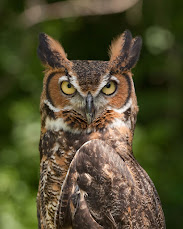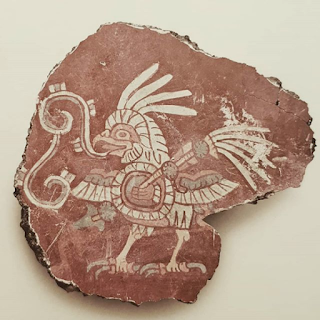Ipan inin metstle Agosto, kisa se noamox, tlen yi kipiya matlakxiwitl in opeh nikihkwilos. Onikihkwiloh ipan inglés-tlahtolli iwan ohmo nikmati tla welis satepan motlahtolkwopas noihki itech in kaxtillantlahtolli. Pero inin amoxtle ahmo san nehwa onikchih, noihki onechpalewihkeh miyakkeh nawatlakameh tlen chantia Mexiko, Morelos, Veracruz iwan Puebla, iwan oksekime Nawatlakameh ompa Estados Unidos. Para ma yehwan noihki kimatikan tlen kihtoa inin amoxtle, nikan nikihkwilohtika se resumen ika nawatlahtolli. Niktlalis san in okachto capitulo, iwan satepan niktlalis resumen nochi capitulos.
1. Amoxpewalistle.
Ipan Mexico Tlalnantle, miyak tlakameh kimatih tlonon "náhuatl", iwan noihki kihtoah inin tlahtolli "náhuatl" iaxkah Mexiko Tlalnantle. Pero yehwan, koyomeh, ahmo tlatlahtoah ika nawatlahtolli nian kahsikamatih, san ihkon tlahtlatoah masewalmeh akinon chantiah ipan nawaaltepemeh. San ompa mononotsah momostlah ika nawatlahtolli.
Ok achto, Mexiko tlalnantlahtokayotl, ahmo okinekiyaya ma yoli altepetlahtoltin, okinekiyaya ma polewiskeh altepetlahtoltin, iwan ma nochime san ika kaxtillantlahtolli mononotsah. Axkan akmo ihkon kihtoa. Axan, ipan Mexiko tlalnantle, tlalnantlahtokayotl miyak kihtoah kineki kipalewis altepetlahtoltin, kihtoa miyak ipatih, kihtoa ma chikawakan. Seppa okihtoh in itlahtohkah Mexico Altepetl, Marcelo Ebrard, "Nochi yehwan tlen ompa ipan inin altepetl itlatohkayotl tekitih, ma momachtia nahuatl, ipampa inin tlahtolli tonochtin timexicanos mero toaxkah, iwan weyi ipatih." Ihkon okihtoh, pero amitla okihchih. Nian owelitih ma mochiwa tlen kihtoa weyi nawatilli "Ley General de Derechos Lingüísticos de los Pueblos Lingüisticos", tlen kihtoa ma nochi masewalli tlen Mexiko chantia kipiya servicios públicos ika itlahtol.
Inon nexkayotia se weyi kwalantle: tleka kihtoa Mexiko Tlalnantlahtokayotl miyak ipatih masewaltlahtoltih, kihtoa in kineki kinpalewis masewalme ma kipiyakan iderechos iwan kineki kinchikawas masewaltlatoltin, maski satepan ahmo miak kichiwa? Tleka kihtoa inon? Ma titotlatlanikan noihki: Kwalle ka, kwak masewalaltepemeh kineki ma Mexiko Tlalnantlahtokayotl kinpalewi ika tlahtolchikawalistle? Noso san kimaka nochi inin tekitl itech Tlalnantlahtokayotl tlen aik amitla kichiwas? Iwan noihki ma titotlatlanikan: Tlonon ma kichiwa masewalaltepemeh tla yehwan kineki ma yoltokan intlahtoltih, ma mochikawakan.
Ipan inin amoxtle, tikittaskeh nochi inon. Tikittaskeh tleka kihtoa Mexiko Tlalnantlahtokayotl in kineki kinpalewis masewaltlahtoltin, iwan tleka satepan san achitsin kichiwa. Tikittaskeh noihki tlen ipampa ok yoltok nawatlahtolli itech miyak masewalaltepemeh, maski noihki ompa ahmo miyak kipalewia Tlalnantlahtokayotl.
Nawatlahtolli ahmo san se tlamantle. Nochi nawaaltepetl kipiya ialtepetlahtol, tlen san isel iaxkah. Amo nochi kihtoa 'nawatlahtolli', sekime kihtoa 'melajtahtol', 'mexicano', 'meshikan', 'nawat', 'pipil', iwan miak okseki kintokayotiah nawaaltepemeh intlahtolwan. Wan inime altepetlahtoltin, okimilih tlahtoltlamachtihki Leopoldo Valiñas 'comunalectos', nikan nikihtos "altepetlahtoltin". Kwak se altepetl kineki ma chikawa in itlahtol, ahmo san kineki ma chikawa nawatlahtolli, sino ke kineki ma chikawa mero itlahtol, inin altepetl mero iaxkah. Se amoxtle ika nawatlahtolli tlen kwextekapan ahmo kipalewis se nawaaltepetl tlen onkah Guerrero noso Morelos, ipampa yeh okse altepetlahtolli. Iwan se tlahtolnawatilli tlen Puebla noso Morelos, ahmo kipalewis se altepetl ompa Kwextekapan ma kichikawa itlahtol. Yehon ipampa nochi altepetl kipiya okse ialtepetlanechikolis, kanin monawatia altepetl. Ipan masewalaltepemeh itlahtohkayoh kisa itech sennemilisyotl noso "comunalidad".
Sekimeh ixtlamatkeh masewaltlanemilihkeh okitlalihkeh inin tlahtolli "comunalidad" para ma se kihto kenin monawatia masewalaltepemeh - ika isennemilisyoh (yehwan Floriberto Dìaz Gomez (mixetlakatl), iwan Jaime Martínez Luna (tsapotekatl)). Noihki, kihtoa Jürgen Habermas, se tlanemilihki Alemantlakatl, ihkon noihki monawatiah altepemeh ompa Europa, ika se "esféra pública", kanin altepechanehkeh moixnamikih iwan mononotsah para ma motlalis kenin ma mochiwa ipan altepetl (yeh kitokayotia inon "acción comunicativa"). Pero melawak ompa Europa okse tlamantle, ipampa ahmo mosentlaliah altepechanehkeh iwan melawak moixnamikih iwan mononotsah, san ika tepostlahkwilolli motlahtolixnamiktiah. San akinon kimati tlahkwilos iwan amapowas welitis kalakis ipan altepetlanechikolistle iwan kimakas itlahtol. Iwan ipan masewalaltepemeh okse tlamantle noihki, ompa melawak moixpantiah masewalmeh, moixnamikih iwan mononotsah ika tlahtolli tlen amo mohkwiloa. Ipampa inon kipiya miak ipatih masewaltlahtolli itech in altepetl kanin mochiwa tlanechikolistle ika masewaltlahtolli, ipampa san akinon melawak kimati mononotsa ihkon ika masewaltlahtolli kwalle welitis kalakis ipan tlanechikolistle iwan kimakas itlahtol.
Se tlahtolli noihki se machiotl (noso miyak machiomeh), iwan machiotl san tikahsikamatih kwak tiwelitih tiktlaliskeh inawak se semanawakittalistle. Semanawakittalistle kihtosneki kenin motta semanawak itech se altepetl isennemilis. Ahmo san se semanawakittalistle onkah, tosesen tikpiyah se tosemanawakittalis, iwan kwak altepechanehkeh kichiwa i altepetlanechikolistle ihkon monawatia kenin yes isemanawakittalis imaltepechan. Se nexkayotl: welis ipan se altepetlanechikolis se masewal kihtoa "ma mokawa niknamaka notlal inawak koyomeh", iwan oksekimeh welis kihtoah "amo, tlalle iaxkah altepetl, ahkwel monamaka wan oksekimeh tlen ahmo nikan powih". Satepan motlalia kenin mochiwas, tla kwalle monamaka tlalle noso ahmo. Ihkon mochiwa, iwan mosentlalia altepesemanawakittalistle, kwak altepemasewalmeh mononotsah ipan itlanechikolis ik isennemilis. Altepetlanechikolistle kihtoa kenin ma mahsikamati semanawak, iwan kipepena ika katle machiomeh ma mahsikamati semanawak.
Ipampa inon, nikan nikteixpantia se yankwik tlahtolli, itoka machionawatilisyotl. Kihtosneki: nochi altepetl kipiya imachiowan, iwan noihki nochi altepetl kipiya inawatilisyoh, inin altepetl san isel kihtos kenin monawatis, kenin kineki ma yoli ma nemilia, iwan kenin tlahtos, iwan ika katle tlahtolli mahsikamatis. Inin kihtosneki noihki, tla tlalnantlahtokayotl kineki tlanawatis, tla kineki kitlalis nawatilli itech nawatlahtolli, kikixtilis in nawaaltepemeh imachionawatilisyoh.
Nikihtos kenin techpalewis inin machionawatilisyotl, ma tikahsikamati tle ipampa ipan sekimeh nawaltepemeh ok yoli nawatlahtolli, iwan ipan oksekimeh akmo yoltok. Noihki nikihtos tleka ma tikchiyakan ika miak tlaixotilistle kwak tlalnantlahtokyotl kineki kichiwa tlahtolchikawalistle itech masewalaltepemeh - ahmo nochipa san kwalle.
Itech in okse capitulo 2, nikteixpantis se tlapowalistle itech non opanoh Mexihko yi wehkah, ipan siglos 18, 19 iwan 20. Satepan ipan capitulo 3, niktlalis kenin panoa axkan ipan siglo 21 itech in nawatlahtolli, iwan tleka Mexiko Tlalnantle axan kitlasohtla iwan kiweyichiwa nawatlahtolli. Ipan Capitulo 4 niktlalis kenin se nawaaltepetl itoka Hueyapan, ompa Morelos, okichih para ma kipiya isel ialtepetlahtokayoh iwan kenin se nawaylahtoltlamachtilissentilistle noihki itla okichih ihkon. Ipan Capitulo 5 nikihtos kenin moyehyekoa ma chikawa nawatlahtolli ipan se weyi kaltlamachtiloyan ompa Tequila Veracruz, iwan kenin kipalewia inin kaltlamachtiloyan masewalmeh tlen mochantiah ompa tepeyoh Zongolica. Ipan capitulo 6, tikittaskeh kenin sekimeh ompa Estados Unidos momasewalmatih, iwan kenin yehwan momachtiah nawatlahtolli - iwan tleka, iwan noihki titlanemiliskeh tla tlen kichiwa yehwan kipalewia masewlaltepemeh Mexico noso kimitlakoah. Ipan capitulo 7, nikihtos kenin inin masewalmachionawatilisyotl kwalle techpalewis in tikittaskeh kenin ma tikimixotiskeh nawatlahtoltih iwan makamo tikimitlakokan, kenin ma tehwan tikoyomeh, tikinmatlaniskeh nawaaltepemeh iwan masewalmeh ma yehwan kixotikan intlahtolwan.
Yankwik Tlahtoltin:
- Mexiko tlalnantle kihtosneki "Nación Mexicana"
- Mexiko tlalnantlahtokayotl kihtosneki "Estado Mexicano" noso "Gobierno Federal "
- Altepetlahtolli kihtosneki "comunalecto" noso "variante lingüístico"
- Machionawatilistle kihtosneki "soberanía semiotica" noso "mandado sobre simbolos"
- Semanawakittalistle kihtosneki "cosmovisión" noso "forma de ver el mundo"
- Altepetlanechikolistle kihtosneki "junta del pueblo" noso noihki "esféra pública"
- Sennemilisyotl kihtosneki "el vivir unidos" noso "comunalidad".
- Masewaltlahtolli kihtosneki "lengua indígena"
- Tlanemilihki kihtosneki "pensador" noso "intelectual"
- nawatlahtoltlamachtilissentilistle kihtosneki "asociacion de educación de lengua nahuatl"






.jpg)




